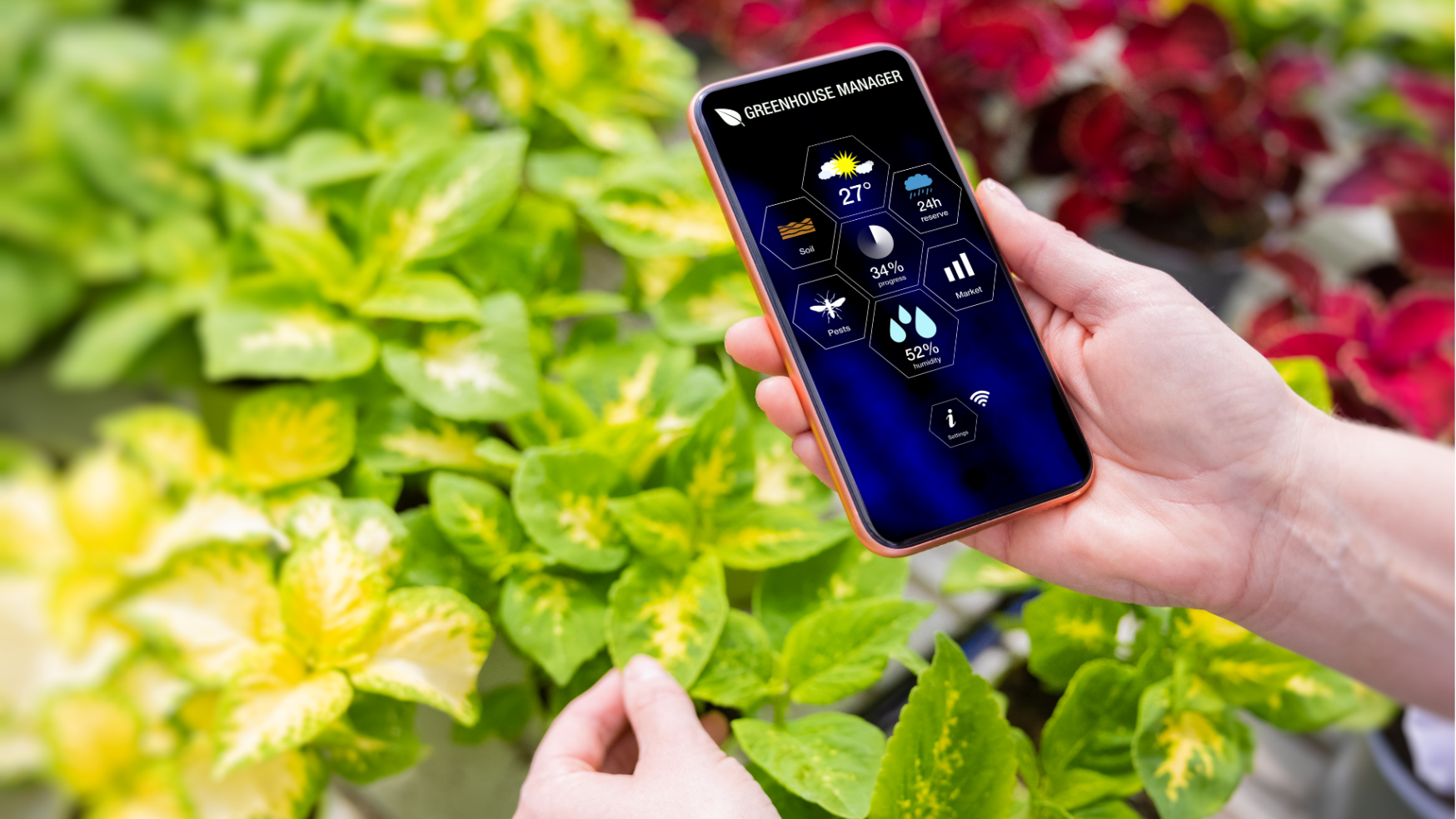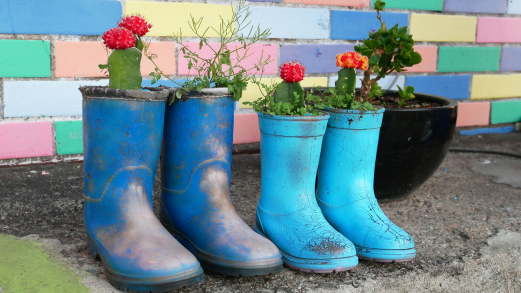The first in SGA’s series of Sustainable Open Gardens and Tours, Zofia’s garden in Mt. Waverley, is an examplar of productivity and aesthetics with low environmental impact and financial cost. Zofia is very resourceful, scouring hard rubbish collections and demolition sites for materials she can use to create lovely design, lush growth and inviting spaces for relaxing. When she moved into the house, the garden had many established trees and shrubs around the edges, and into this framework she has achieved her miracle of recycling and productivity.
Garden arches, old gates and wire mattress bases form supports for climbers; windows, planks and other materials salvaged from a house being demolished next door have made the chook house. In fact, most of the infrastructure is made from discarded items. “I love the aesthetic of re-using found materials in different ways – saving them from being destroyed and giving them a new life (I also save a lot of money). For example, strawberry beds made from old council recycling bins,” she said.
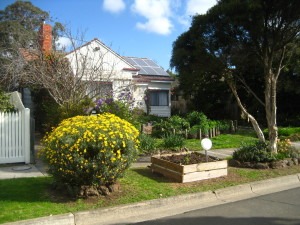 She has also made a no dig garden bed from wooden pallets and other materials she found on hard rubbish. This she has put on her nature strip which gets a good amount of sun and she has planted a neighbourhood herb garden between the yellow flowering Tagetes. “It’s a way of sharing with neighbours and building community,” she said.
She has also made a no dig garden bed from wooden pallets and other materials she found on hard rubbish. This she has put on her nature strip which gets a good amount of sun and she has planted a neighbourhood herb garden between the yellow flowering Tagetes. “It’s a way of sharing with neighbours and building community,” she said.
Her front garden has other no dig beds formed from salvaged posts and wire as edging with straw, horse manure and compost. They are filled with vegetables including peas, beetroot, spinach, broccoli and potatoes; coriander and dill have self-sown among the other plants. When asked how she accesses so much compost, she said that it all comes from her garden – from the many trees and shrubs which shed leaves and flowers.
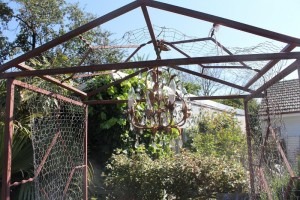 Around the back is a yard full of greenery and objects of interest. One of the first things you notice is a chandelier, which Zophia must have found, hanging from a rusty arch.
Around the back is a yard full of greenery and objects of interest. One of the first things you notice is a chandelier, which Zophia must have found, hanging from a rusty arch.
The vegetable patch is a mandala with 6 sections each edged in bluestone salvaged from a renovation up the street. The whole area is fenced with found materials to keep the chickens out and to support the espaliered fruit trees – mostly heritage apples, including snow apple and Cox’s Orange Pippin – along the fence of the patch. Inside is a very healthy looking bed of garlic – soon to be ready for harvest, which will give her a year’s supply. There are also raspberries, broad beans and a blackcurrant and beds with mustard to inhibit nematodes which could attack the next planting of tomatoes. Her eight chickens lay eggs, provide manure and rework the compost.
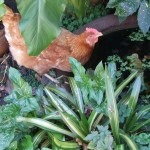 Chickens are just one aspect of Zofia’s sustainable way of gardening. She also harvests water from every gutter on the property. She has three tanks with a total capacity of 10,000 litres. Solar panels generate her electricity; an old laundry tub forms a worm farm and she has a bee hive for pollination and honey.
Chickens are just one aspect of Zofia’s sustainable way of gardening. She also harvests water from every gutter on the property. She has three tanks with a total capacity of 10,000 litres. Solar panels generate her electricity; an old laundry tub forms a worm farm and she has a bee hive for pollination and honey.
Then, of course, there are all the edible plants – fruit trees (such as apricot, avocado, nectarine, lemon and peach) and the extensive vegetable garden. She lives off the produce in her garden, doesn’t have to buy any vegetables and has plenty of eggs. “One year I decided to measure all the produce I harvested from my garden in a three-month period (March to June) and it came to 39 kilos,” she says.
Not all the plants in the garden are edible. There are large hydrangeas against a fence and Acanthus which Zophia says provide cool shelter for the chooks in summer. And a wide variety of ground covers add to the lush appearance and serve as green mulch.
There are two ponds which are home to edible water plants and frogs as well as beneficial insects. How did she get the frogs? “I put the ponds in, they just came,” she says. There is also space for seed propagation – in a shade house at the back of the garden next to the chook house.
Fences are decorated in unusual ways – hanging on one stretch are old bird cages (some of which are used from time to time to cover seedlings and prevent blackbirds from digging them up). Then there are rusty bed springs adorning another spot. She tells a sweet story about them: ”A little bird sat on the bed springs and must have been eating fig. Did a little deposit and there was a seed in that little deposit. Now I’m espaliering that fig tree.”
When asked of her experience with possums, a pest to many gardeners in Melbourne, Zofia said “Treed areas have possums. In this area, so many of the houses have been pulled down and so many trees have been pulled down too, possums don’t bother me at all.”
Zofia belongs to a Harvest Share Swap group which she says is “a great place to share abundant harvests as well as gardening ideas.”
Related Articles:
Citizen Science: A Pathway to Gardening Success and Biodiversity Conservation
In recent years, the realm of science has experienced a remarkable transformation, one that invites people from all walks of life to participate…
A Sustainable Gardener’s Guide to Thrifty Gardening
Creating an eco-friendly and cost-effective garden involves more than just nurturing plants; it's about adopting a sustainable approach that…

